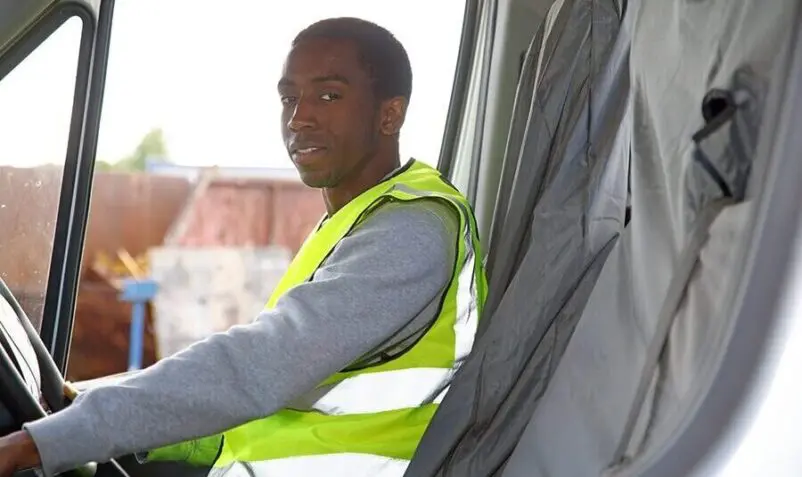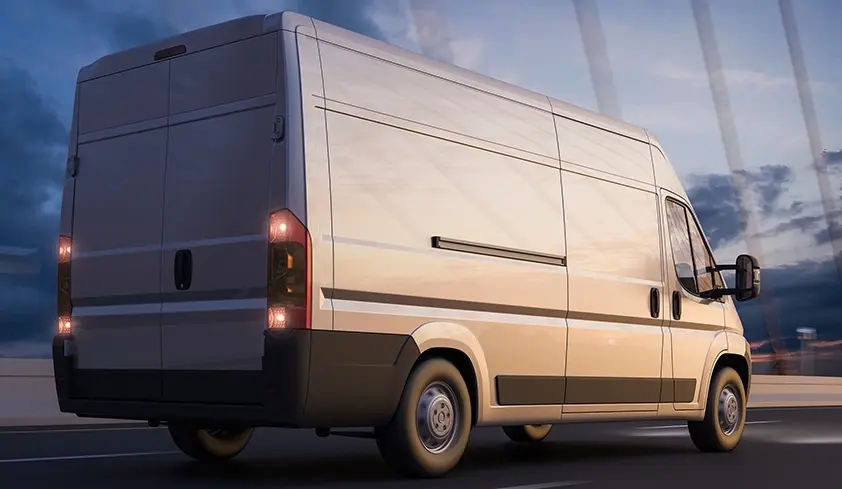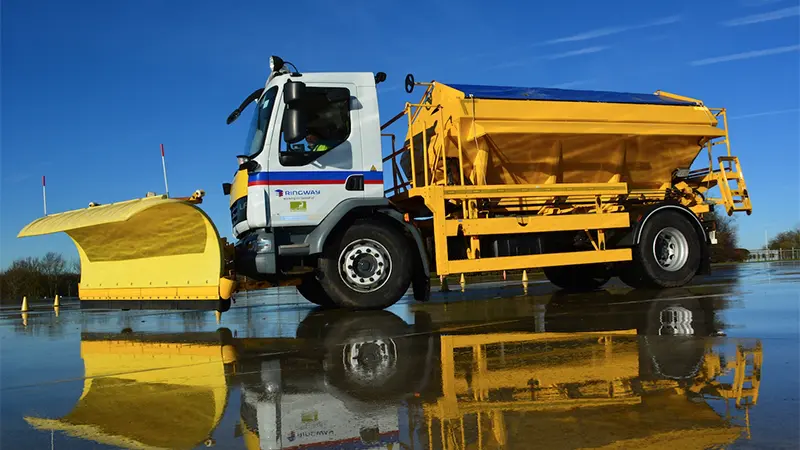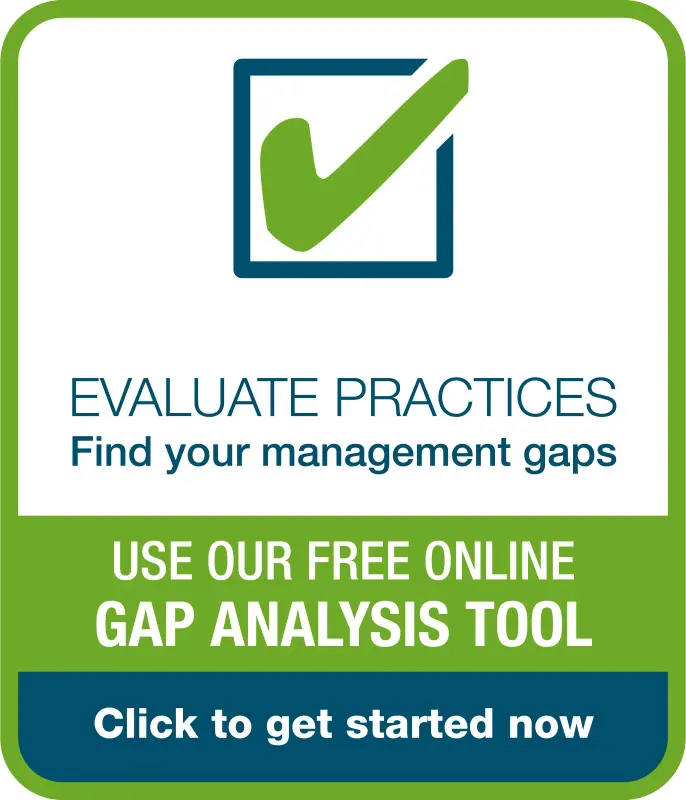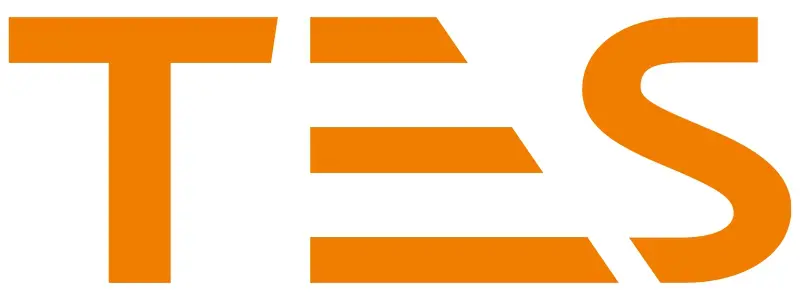
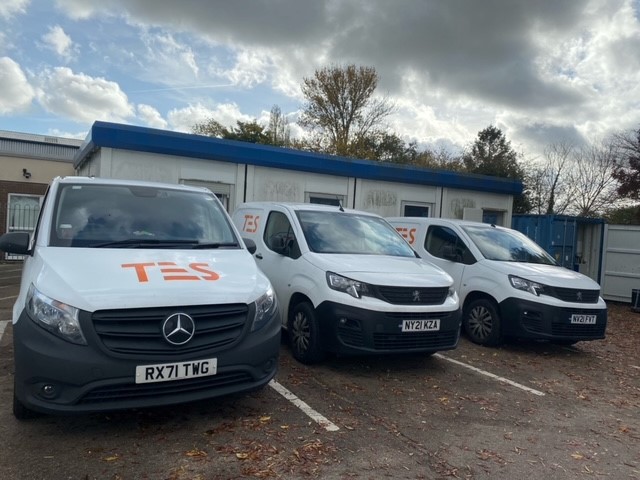
Fleet Size
LCVs: 140
TES 2000 is a railway infrastructure and construction company. It runs 140 LCVs, mostly two-seater vans, which are used purely for driver transport. In April 2020 Mick Kiely became the first professional fleet manager the company had ever had. He tells us how he drove down incident rates and substantially reduced the company’s fleet costs.
Summary of Achievements
Speeding PCNs
DOWN 96%
Vehicle Collisions
DOWN 45%
in just 16 months
Fleet Insurance
DOWN 35%
Fuel Costs
DOWN 20%
in 2 years
Demonstrating leadership in driver safety
“12 years ago, a friend of mine was killed in a non-fault RTC while he was driving home. I arrived at the scene to witness my colleague’s lifeless body in the driver’s seat. That opened my eyes and I stepped aside from my job and went into fleet management. I’m relentless in educating employees and directors about their responsibilities. I never want to have to knock on someone’s door and offer my condolences due to a road traffic collision.”
Mick Kiely, Fleet Manager, TES 2000
More details

TES 2000 is a railway infrastructure and construction company. It runs 140 LCVs, mostly two-seater vans, which are used purely for driver transport. In April 2020 Mick Kiely became the first professional fleet manager the company had ever had. He tells us how he drove down incident rates and substantially reduced the company’s fleet costs.
“12 years ago, a friend of mine was killed in a non-fault RTC while he was driving home. I arrived at the scene to witness my colleague’s lifeless body in the driver’s seat. That opened my eyes and I stepped aside from my job and went into fleet management. I’m relentless in educating employees and directors about their responsibilities. I never want to have to knock on someone’s door and offer my condolences due to a road traffic collision.”
Mick Kiely, Fleet Manager, TES 2000
When Mick Kiely took over management of TES 2000’s fleet, he studied the company’s fleet insurance and incident reports and realised he needed to take drastic action. Apart from a handful of flatbeds and crew cab vehicles, the rest of the fleet are LCVs which are used purely for employee transport to sites.
Drivers routinely used the company vehicles for personal journeys. Mick banned this and instituted a policy of only clients and company employees being allowed in company vehicles. He emphasised to his drivers that they were not insured to carry family members and should not run personal errands in them. This was a drastic but necessary change as most drivers used the vehicles in lieu of a family car. However, in the first six months of this policy being enforced, it created enormous fuel benefits. Drivers who had covered 25,000 miles in 2019 now only did 12,000 miles a year.
There is a direct correlation between mileage and risk exposure. By more than halving the fleet mileage, Mick reduced incidents and risk.
There was some resistance to the safety changes Mick introduced because previously drivers had had little management. However, he gave drivers no choice except to follow company policy or surrender their right to drive a company vehicle.
Driver app
He reworked the drivers’ handbook and instituted an audit trail to ensure it had been read, which the fleet was previously lacking. A driver app called Veho Check allowed easy dissemination of the handbook.
The app also facilitates daily vehicle checks, with a specific procedure drivers must follow, and which is completed with an electronic signature and date/time stamp.
Defect reports automatically arrive on Mick’s system and are sent straight to the hire companies which provide the vehicles: Rent-a-Merc and Reflex Vehicle Hire. The leasing contract is up for renewal in a couple of months, and Mick has been warned that inflationary effects on maintenance costs and materials will push up rates. However, the drastic reduction in mileage, with its consequent savings in vehicle maintenance and tyres, has offset this substantially, and the rise in vehicle cost will only be £31 a month.
Driver training
In December 2020 Mick met with his insurance company, AXA Connect, to go over the company incident figures. He assured them that he could reduce the company’s work-related road risk but required their help and they responded by providing 50% of the funding for driver training.
TES brought in a professional training company, RED Fleet Driver Training, with a comprehensive eLearning solution. RED’s app creates a personal profile for each driver and provides access to a wide range of eLearning modules, including safe driving in different conditions and on different roads. Drivers also have short in-vehicle coaching sessions from a driver trainer.
TES’s insurers have reason to be pleased with their investment in the company’s training programme.
Insurance costs have reduced from £1100 to £720 per vehicle in two years. Mick believes another reduction is likely at renewal. TES recently received a rebate of £11,000 for the last quarter due to low claims.
Telematics
Mick introduced dash cams and telematics to all vehicles. The solutions, Vision Track and Driive with Reflex, are provided by the vehicle suppliers. He set up exception reports so that all risky incidents would come straight to him as an email alert. He then rings drivers as soon as they are off duty to discuss the incident. Usually this is a short conversation and, for 90% of drivers, that quick chat ensures it never happens again.
Initially these alerts numbered 600 a day – equivalent to four per vehicle. Telematics and other safety interventions have reduced this to just 15 a day. Telematics has also facilitated the enforcement of rules, such as the ban on personal use.
The most common incidents now reported are harsh braking, caused by approaching traffic lights or roundabouts at inappropriate speed.
Speed awareness
Drivers are understandably keen to get home after their shift and this led to speeding. Mick introduced a speed awareness course and told the drivers that their speed would be monitored going forwards. He believes that knowing they were monitored helped to reduce speeding almost overnight.
Penalty Charge Notices (PCNs) have dropped from 100 to approximately four per month.
Positive Reinforcement
Mick believes in rewarding drivers for safe performance. Each month the top four drivers are given £100 pounds. The top 10 drivers per month go into an annual draw with two winners selected by a director for a prize of £500 pounds each. This positive reinforcement has helped drive huge improvement, he says.
Business benefits
-
PCNs reduced by 96%
-
Insurance reduced by 35% per vehicle
-
Lease rises offset by maintenance savings
-
45% reduction in collisions in 16 months
-
20% reduction in fuel costs in two years despite price increases
Awards
Mick was awarded Road Risk Manager of the Year 2022 at UK Fleet Champions Awards for his remarkable work in reducing in work-related road risk. Mick says the process is a team effort and the support of admin staff, HR, health and safety managers and many others make the work he does possible. He also gives great credit to their fleet administrator Miriam Kiely-Eyre (no relation) who he says is a formidable advocate for road safety improvements.
TES 2000 also won Company Driver Safety Award (250 vehicles or less) in 2021 and 2022. His previous employer received the award in 2018 and 2019 under Mick’s leadership.
Top takeaways
- All employees from HR to admin do the same learning as the drivers, even if they’re only driving their own vehicles. Mick says you cannot ask someone to do something if you’re not prepared to do it yourself.
- Mick says it would not have been possible to achieve all of this without the full support of the directors and the great resources available from DfBB and other sources. It takes investment but, within a few months, companies will achieve substantial return on that investment.
- Every fleet should have professional management and, says Mick, those managers should not be afraid of confrontation. Safety interventions are for the benefit of drivers and the public as well as the company, and that’s worth facing down initial resistance.
- Strict, enforced policies should be balanced with recognition and reward for compliance, improvement and safe performance.

